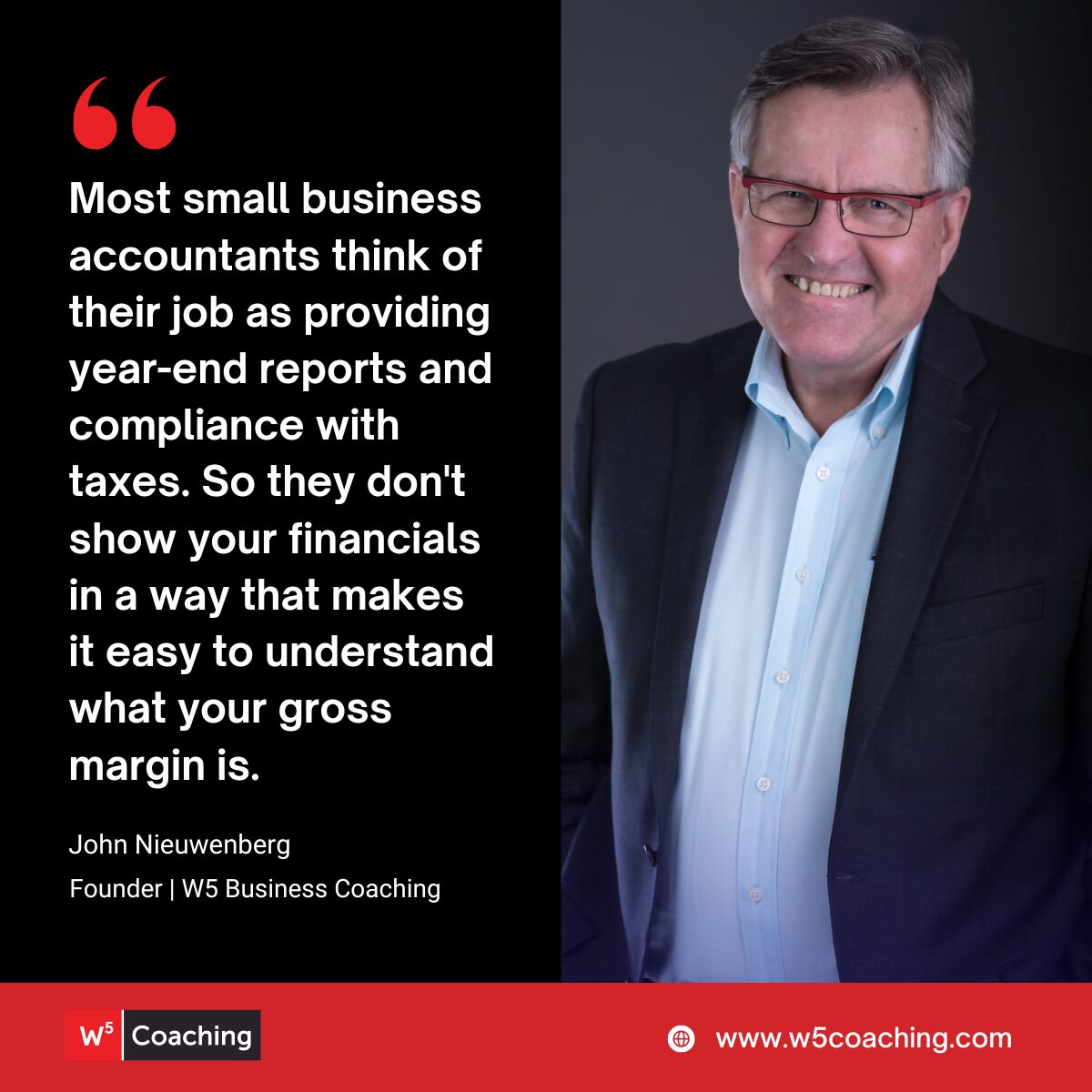Why Small Business Owners Need to Know Their Margins

One of the first questions I ask new clients is “what is your margin?”
This is a basic piece of financial information that every business owner needs to know – but very few actually do.
(So, if you’re thinking to yourself: “hmmm…I don’t know MY margin, either” then I wrote this post for you!)
Here’s a fundamental truth I’ve observed over nearly 20 years of business coaching: owners who understand their financials make more money than those who don’t.
When you understand how your business is performing financially, you can make better decisions, avoid devastating mistakes, and generally feel more in control.
So, let’s look at margins.
What Is a Margin?
Margin is essentially a measure of profitability.
There are two types of margins: gross margin and net margin.
Gross Margin
 Gross Margin is the difference between sales and the cost of goods sold (COGS) – including labour, divided by sales. Gross margin figure shows how profitable your products and services are.
Gross Margin is the difference between sales and the cost of goods sold (COGS) – including labour, divided by sales. Gross margin figure shows how profitable your products and services are.
Suppose your business sells a product for $200.
The material cost is $100.
The labour costs to produce it are $50.
Your COGS (cost of goods sold) – including labour – is $150.
The gross margin calculation would be:
- Gross Margin = (Sales – COGS) / Sales
- Gross Margin = ($200 – $150) / $200
- Gross Margin = 25%
Keep in mind that most small business accountants develop financial reports with taxes in mind, so they put labour costs into fixed expenses rather than cost of goods sold.
You may need to work with your accountant or bookkeeper to pull out the numbers you need to make these calculations accurately.
Net Margin
Net Margin is the percentage of net profits generated from your sales, taking into account ALL your expenses, not just COGS. It shows how profitable your company is as a whole.
To calculate your net margin, you would also include a proportionate share of other operating expenses – things like your rent, interest, and taxes.
Let’s say those added up to $30.
- Net Profit = Sales – COGS – Operating Expenses
- Net Profit = $200 – $150 – $30 = $20
- Net Margin = $20 / $200 = 10%
Here’s why you need to calculate both.
If your operating expenses totaled $60, you’d be operating at a loss.
- Net Profit = Sales – COGS – Operating Expenses
- Net Profit = $200 – $150 – $60 = ($10)
- Net Margin = ($10) / $200 = (5%)
Why Business Owners Need to Know Their Margins
 Your business needs a scoreboard to show how it’s performing. Without good financial information, you’re flying blind.
Your business needs a scoreboard to show how it’s performing. Without good financial information, you’re flying blind.
Understanding your margins will help you make better decisions in these areas:
- Pricing Strategies: Making sure that the prices you set cover your costs.
- Cost Control: Identifying areas where you can reduce costs and increase efficiency.
- Financial Health: Ensuring your business is profitable and sustainable.
- Strategic Planning: Engaging in long-term planning and resource allocation.
Conversely…
When you DON’T know your margins, you can run into financial trouble.
In one case, an owner I worked with was on the verge of going out of business when we met.
When we analyzed his financials, we discovered that his margins were much lower than they needed to be. Including some instances where they were selling products for less than it cost to manufacture them.
We implemented some financial practices, including:
- Getting detailed reports for each job – including manufacturing costs, delivery costs, actual costs vs what they based their quotes on.
- Regularly reviewing these numbers and questioning discrepancies.
- Updating pricing policies and procedures based on the financials.
6 years later, after getting good at “the numbers” of his business, he not only turned the company around – he was also able to purchase the commercial building his business was housed in for $5,000,000.
Understanding your financials is a key step towards running your business like a true CEO.
When you understand financials like gross and net margins, cash flow, and common sized numbers – you’re better equipped to make strategic decisions that align with your business goals and drive growth.
It helps to have an experienced advisor to help you get the numbers you need, then analyze them to learn what they are telling you.
Ready to start running your business like a CEO? Book a 15 minute call to talk about about coaching: Book a Call with John

Build a Self-Managing Company
How to build a business that runs smoothly, profitably, and (mostly) without you.
Feeling stressed out and overwhelmed with a business that is taking all your time - and not giving you enough in return?
Are you finding it challenging to hire the right team (and get them to do the right things)?
I wrote this little guide for you!
Enter your details below to receive your free copy!
